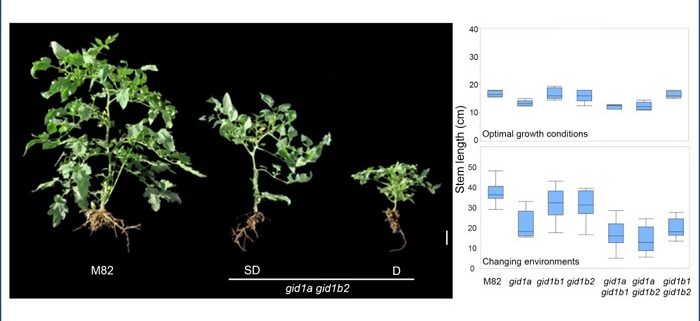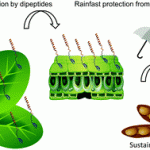Gene redundancy: is it also redundant in the “real world”?
Illouz-Eliaz et al. report that GA receptor genes that appear redundant under controlled climate conditions have unique roles under field conditions. Plant Cell https://doi.org/10.1105/tpc.19.00235
By Natanella Illouz-Eliaz, Uria Ramon, Hagai Shohat, Shula Blum, Sivan Livne, Dvir Mendelson and David Weiss. Institute of Plant Sciences and Genetics in Agriculture, The Robert H. Smith Faculty of Agriculture, Food and Environment, The Hebrew University of Jerusalem, Israel.
Background: Gibberellin (GA) is a growth-promoting phytohormone that regulates numerous developmental processes throughout the plant life cycle, including seed germination, stem elongation, leaf expansion, flowering, fruit development, and more. The DELLA proteins inhibit all these GA responses. When GA binds to its receptor GID1, they interact with DELLA and stimulate DELLA degradation, leading to the activation of GA responses. All dicot plants have multiple GA receptors, raising the question of whether different receptors regulate different developmental responses. Tomato has three GA receptors and one DELLA protein, making tomato an ideal system to study this question. Using genome editing technology (CRISPR/Cas9), we created gid1 single, double and triple mutants in tomato and studied the role of each receptor in plant development and GA responses.
Question: We wanted to know if the different tomato GA receptors have unique roles in the regulation of plant development and if the existence of several receptors provides some evolutionary benefit to the plant.
Findings: When the single and double mutant plants were grown under optimal controlled growth conditions, they were almost normal and very similar to the wild type, suggesting that each receptor can fully replace the others (redundancy). However, when grown in the field, under changing environments, all mutant lines, but not the wild type, exhibited a high degree of phenotypic variability, including semi-dwarfism and even extreme dwarfism. Thus, while under optimal controlled growth conditions, one active GA receptor is sufficient to support normal growth, in the “real world”, under a changing environment, all three are needed.
Next steps: We would like to find the environmental factor that causes instability in gid1 mutants, to reveal the mechanism of this instability and to understand how three receptors with overlapping functions provide growth stability under environmental extremes.
Natanella Illouz-Eliaz, Uria Ramon, Hagai Shohat, Shula Blum, Sivan Livne, Dvir Mendelson and David Weiss. (2019). Multiple gibberellin receptors contribute to phenotypic stability under changing environments. https://doi.org/10.1105/tpc.19.00235.
Key words: Plant growth, gibberellin receptor, changing environment, redundancy




